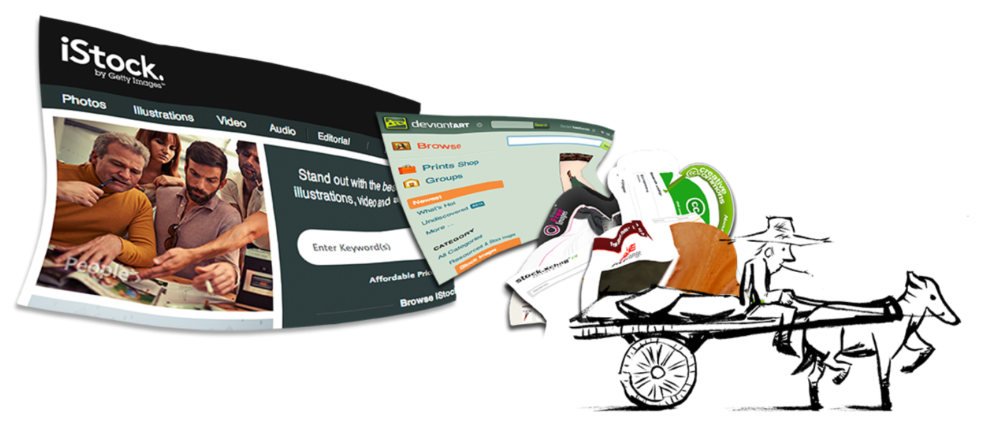Stock photography looks like stock photography. We can pick a stock photo out of a lineup and recognize it for exactly for what it is: an image that someone has produced and that thousands or millions have already seen. Unfortunately, if you intend to use it for your blog/site/promotional campaign, it can say some things about you that you might not realize. For example, an overused stock photo might indicate to a reader that they’ve already read the article, even though they haven’t. There are plenty of articles to point you in the direction of annoyingly overused stock images, but not enough telling you the alternative: creating your own library of photos and art.
At this point, the Internet is used by one-third of the population, and that number is growing by the minute. This means that every day blogs, websites, and promotional campaigns are launching, and they all need imagery to go along with them.
The problem with just subscribing and using stock photography is that it’s most likely being used in other places on the web. And since people use imagery to make decisions quickly, an overused stock image can be the difference between someone reading your blo and someone clicking away because they think they’ve already read it.
For instance, I Googled “Top Christmas Blogs” just to see if I could find a blog site that uses stock photography along with a list article. Sure enough, the first hit was a straight-up stock photo:
I then took the photo and used it to do a Google image search for correlated image hits on other sites. You may not know it but, Google has a way for you to upload a photo to find out where else the image is on the web. Here’s one way and here’s another.
There were 91 different websites with that image uploaded to it! Some of those image usages are even on competing websites. Even more interestingly, it took me all of five minutes to find out who the owner of the image is.
Tyler Olson is a stock photographer from Norway who has shot tens of thousands of stock photos. That means if you’ve looked through any stock photography site, you’ve probably seen one of Tyler’s photos.
Now, there’s nothing wrong with using Tyler’s stock photos; in fact, most of them are stunning. I’m guessing, however, that the stock photos you’ve used in the past have a story that connects to a person like Tyler – a story you’d never even know about!
In a world of Instagram, Flickr, open license imaging, and affordable digital cameras, consumers are becoming deftly aware that all photos have stories. I would argue that the better the story, the more interesting the photo. With consumers producing more and more art and photography, they now see themselves as artists and photography experts. And why not? If there’s a lesson to be learned from Instagram, GoPro, and Lytro, it’s that all human beings have the right to take interesting photos. And why not? Taking photos is fun!
Stock photos are great, but why not hire local?
So, let me ask you this: What are you hoping the photos on your blog will accomplish? Are they posted simply to keep people interested in what your copy is trying to say? Tyler’s photo, for reuse, would probably run you $15. What if, for the same price, you were able to get photos developed by local, aspiring photographers, for the same price? Would you do it?
The advantage of reaching out to the amateurs and struggling local pros is that they will see you as helping them become successful, and they’ll respect you for it. They’ll likely even tell their friends about your product and the story of how you helped them. Now, all of the sudden, your blog photo has a story. Your image investment isn’t just one that can be found on 91 other websites across the Internet – it’s a unique piece of art that has a sales force behind it. A sales force that is determined to help you out the way you helped this unique piece of art be born.
Choose to make your stock graphics art. Hire photographers. Hire illustrators. Hire artists. (Hire Us.) Tell a story with your work.







